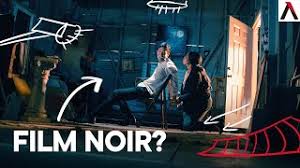The Rise of Indian Noir
Indian cinema has experienced a cinematic renaissance in recent years with new age filmmakers and cinematographers re-embracing the noir look. With it’s high contrast lighting, shades of grey morals and decaying urban landscape, Indian noir is a mixture of old stories with modern issues that new generation of readers can relate to when it comes to crime and society.
Defining Indian Noir: A Visual and Thematic Exploration
Indian noir is not merely a genre but a stylistic approach that delves into the complexities of human nature and societal structures. Drawing inspiration from classic film noir, it incorporates elements such as:
- Chiaroscuro Lighting: High-contrast lighting to create dramatic shadows.
- Urban Settings: Depictions of city life that highlight both vibrancy and decay.
- Moral Ambiguity: Characters often face ethical dilemmas without clear right or wrong choices.
- Narrative Complexity: Non-linear storytelling and unreliable narrators.
This approach allows filmmakers to explore themes of corruption, identity, and existential dread within the Indian context.
Pioneers of the New Dark Wave
1. Hemant Chaturvedi: Crafting Realism Through Shadows
Hemant Chaturvedi gained acclaim for his work in Company (2002), where his cinematography brought a gritty realism to the portrayal of Mumbai’s underworld. His use of natural lighting and handheld cameras in films like Maqbool (2002) and Kurbaan (2009) further established his reputation for creating immersive, atmospheric visuals that enhance the narrative’s tension and depth. (Wikipedia)
2. Rajeev Ravi: Visualizing Moral Dilemmas
Rajeev Ravi’s cinematography in Monsoon Shootout (2013) exemplifies the fusion of noir aesthetics with Indian storytelling. The film’s exploration of a cop’s split-second decision is mirrored in Ravi’s use of rain-soaked streets and dimly lit interiors, creating a mood of uncertainty and suspense. (Wikipedia)
3. Modhura Palit: A New Voice in Cinematography
Modhura Palit stands out as a trailblazer, being the first Indian to receive the Pierre Angénieux ExcelLens award at Cannes. Her work in films like Bahadur – The Brave and Amar Colony showcases her ability to blend traditional Indian visuals with contemporary noir elements, using light and shadow to convey complex emotional landscapes. (Wikipedia)
4. Sudeep Chatterjee: Merging Style with Substance
Sudeep Chatterjee’s versatility is evident in his diverse body of work, including Chak De! India (2007) and Kaalpurush (2008). His cinematography often employs desaturated colors and dynamic camera movements to reflect characters’ internal struggles, aligning with noir’s emphasis on psychological depth. (Wikipedia)
5. Advaitha Gurumurthy: Reviving Noir in Regional Cinema
In Kavaludaari (2019), Advaitha Gurumurthy brings noir sensibilities to Kannada cinema. The film’s narrative of a traffic cop uncovering a decades-old mystery is complemented by Gurumurthy’s use of moody lighting and meticulous framing, creating a suspenseful atmosphere that pays homage to classic noir. (Wikipedia)
6. P.S. Vinod: Balancing Tradition and Innovation
P.S. Vinod’s work in Vikram Vedha (2017) demonstrates a masterful balance between traditional Indian storytelling and noir aesthetics. The film’s exploration of moral ambiguity is visually represented through Vinod’s strategic use of light and shadow, enhancing the narrative’s complexity. (Wikipedia)
Thematic Depth and Visual Storytelling
Indian noir cinematography is not just about visual style; it’s a tool for deeper storytelling. Cinematographers use lighting, composition, and camera movement to:
- Reflect Psychological States: Lighting choices often mirror characters’ internal conflicts.
- Enhance Narrative Tension: Camera angles and movements build suspense and uncertainty.
- Depict Societal Issues: Visuals highlight themes like corruption, inequality, and existential angst.
This approach allows for a richer, more immersive cinematic experience that resonates with audiences on multiple levels.
The Future of Indian Noir Cinematography
The noir influence in Indian cinema will continue to grow, too, as young cinematographers and filmmakers continue to experiment with technique and content. Already, the hybrid of digital and global storytelling there yields exciting possibilities for the genre’s future expansion, ensuring Indian noir remains one of the most dynamic and influential in world cinema.
The renaissance of noir in Indian cinema led by visionary DPs has widened its visual and thematic universe. In dealing with the subtleties of human and social life in this way, the filmmakers have made complex, strong narratives that question, stimulate, and reaffirm, bringing into being a moment of significance in the development of the Indian film. r
Frequently Asked Questions (FAQ)
Q1: What defines Indian noir cinematography?
Indian noir cinematography is characterized by its use of high-contrast lighting, urban settings, and themes of moral ambiguity. It often incorporates non-linear storytelling and complex characterizations to explore societal and psychological issues.
Q2: Who are some notable Indian noir cinematographers?
Notable figures include Hemant Chaturvedi, Rajeev Ravi, Modhura Palit, Sudeep Chatterjee, Advaitha Gurumurthy, and P.S. Vinod, each bringing unique perspectives and techniques to the genre.
Q3: How has Indian noir evolved in recent years?
Indian noir has evolved by integrating traditional storytelling with contemporary themes and global cinematic techniques, leading to more nuanced and visually compelling films.
Q4: What impact has Indian noir had on global cinema?
Indian noir has garnered international attention, with films like Monsoon Shootout premiering at Cannes, showcasing the genre’s global relevance and the country’s growing influence in world cinema.
Q5: Where can I watch Indian noir films?
Indian noir films are available on various streaming platforms, including Netflix, Amazon Prime Video, and regional services, offering a diverse selection of titles for viewers interested in exploring the genre.